While Grafana began as a powerful data visualization tool, its evolution into a multi-tool observability platform — with Loki for logs, Tempo for traces, and Mimir for metrics—often means managing several moving parts.
Key challenges with Grafana include:
- Multiple Backends to Manage: For full-stack observability, Grafana relies on a suite of tools—Loki for logs, Tempo for traces, and Mimir for metrics. This composable setup means you must configure and maintain separate systems, which increases operational overhead.
- Handling High-Cardinality Data: Loki, designed for cost-effective log aggregation, intentionally keeps indexing low. However, when dealing with high-cardinality fields (like unique user IP addresses), it can result in thousands of log streams that slow down query performance.
- Fragmented Observability Experience: The need to integrate and correlate data from different backends often leads to a steeper learning curve and can make troubleshooting more time-consuming.
If these challenges sound familiar, you’re not alone. In this article, we explore the top 11 Grafana alternatives that aim to streamline observability and provide a more integrated, efficient experience.
Top 11 Grafana Alternatives
- SigNoz (Open-Source)
- Kibana
- Datadog
- New Relic
- Splunk
- Prometheus
- Dynatrace
- AppDynamics
- VictoriaMetrics
- Metabase
- Zabbix
SigNoz
SigNoz can be a great Grafana alternative. SigNoz is also open-source, just like Grafana. So, if you want to self-host SigNoz, clone the GitHub repo to get started.
Architecture & Data Storage
Under the hood, Grafana is powered by multiple tools like Loki, Tempo, Mimir & Prometheus. In contrast, SigNoz is built as a unified tool serving logs, metrics, and traces in a single pane of glass.
SigNoz uses a single datastore - ClickHouse to power its observability stack. This makes SigNoz much better in correlating signals and driving better insights.
OpenTelemetry Support
SigNoz is built to support OpenTelemetry. OpenTelemetry is an open-source standard for generating telemetry signals, which allows you to:
- Avoid vendor lock-in
- Have flexibility in choosing different backends for different signals
SigNoz indexes all OpenTelemetry (OTel) attributes—whether string, number, or boolean—without the limitations imposed by tools like Loki. This means you can effortlessly query and aggregate high-cardinality data (such as detailed duration metrics) without performance penalties.
Key Features
Application Performance Monitoring
SigNoz comes with out-of-the-box APM charts like p90, p99 latency, request rates, and error rates. You can also monitor database calls and external calls as soon as you instrument your application with OpenTelemetry SDKs.
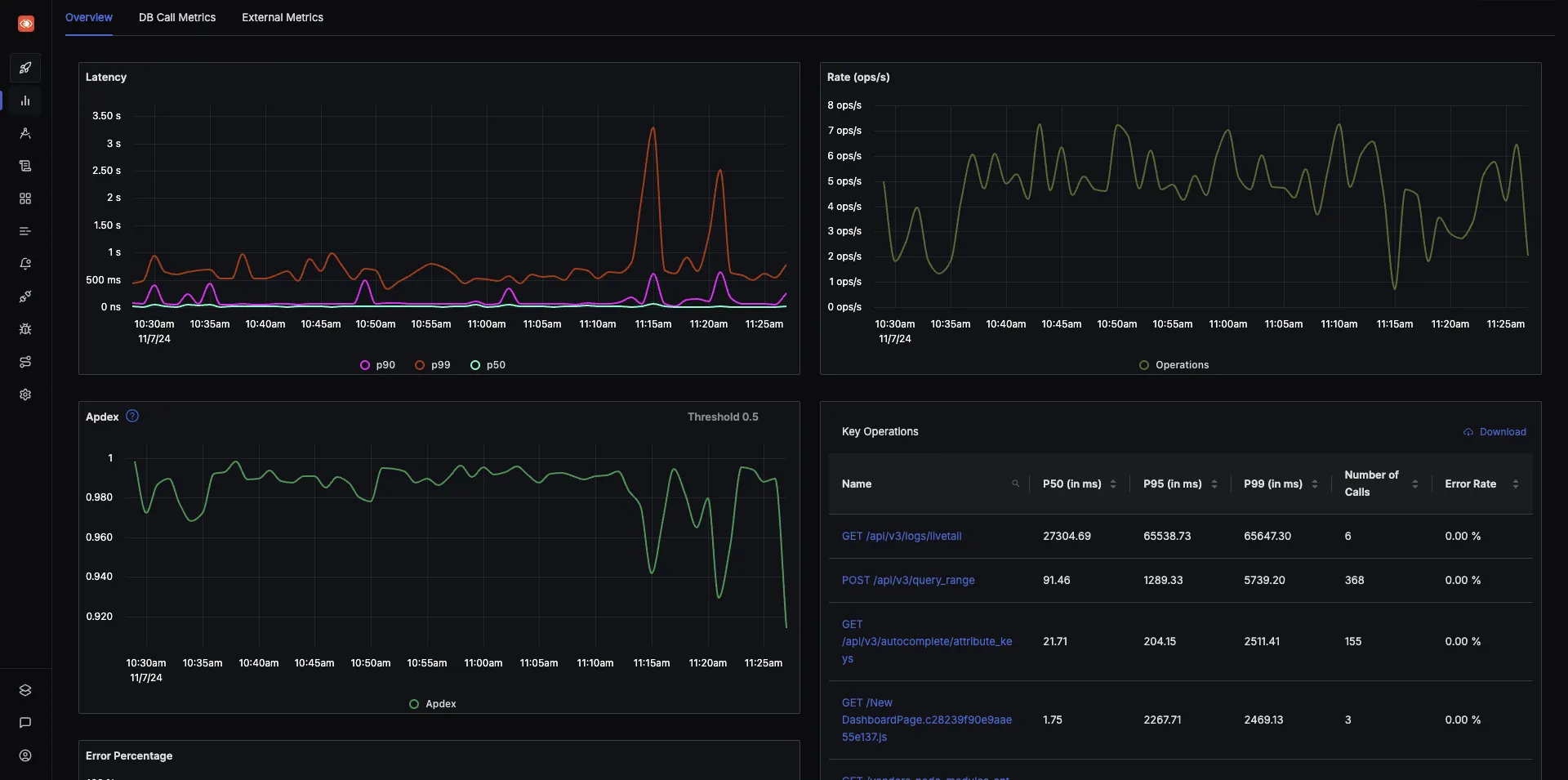
Distributed Tracing
SigNoz offers comprehensive insights into tracing data through visual representations like Flamegraphs and Gantt charts. The Gantt charts provide a clear visual hierarchy of services and events, easily identifying latency-causing events in a request call.
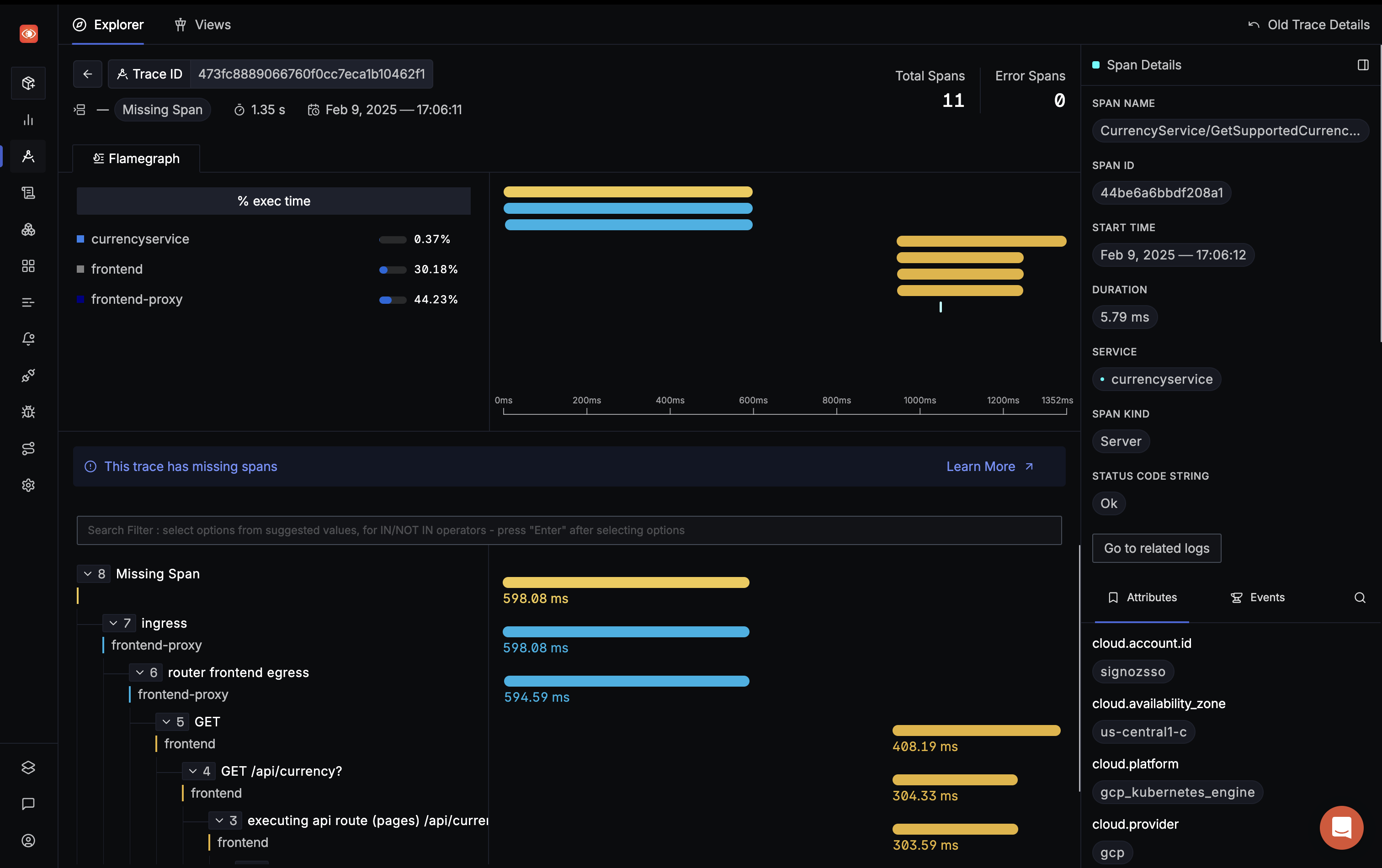
Traces without limits
With SigNoz, you have the capability to perform aggregates on traces, allowing you to gain deeper insights into both your application and infrastructure.

Query & Aggregation Capabilities
SigNoz allows you to query any attribute and create complex aggregations on it. Our datastore, ClickHouse is built to support aggregations over massive datasets.
SigNoz provides a simple query builder where you can create any analytical query with just a few clicks.
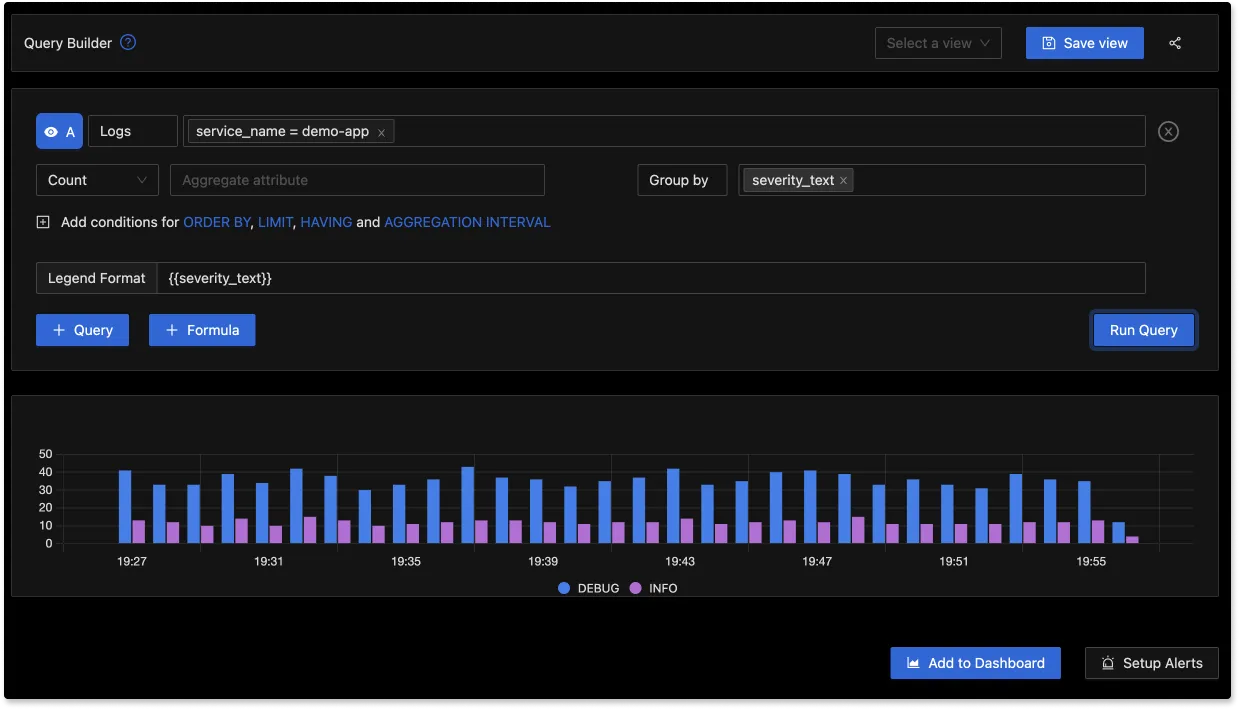
Performance & Pricing
We did a logs performance benchmark of open-source SigNoz with Elasticsearch and Loki. Our key findings for Loki showed:
- Ingestion is mainly limited by the number of streams that it can handle
- Loki was not able to return the results of our test queries
- Loki took the least amount of storage as it indexed only two keys
We also did a pricing comparison of SigNoz with other popularity observability tools including Grafana. SigNoz can save up to 45% of your Grafana bill.
Kibana
Kibana is an open-source data visualization tool that can serve as a good alternative to Grafana for real-time data visualization and analysis, particularly excelling in log and event data analysis. Kibana wasn’t designed as a stand-alone tool; it is a part of the Elastic Stack (ELK), where it collects log data from Logstash and stores it in Elasticsearch.
Kibana is an integral component within the Elastic Stack (ELK), offering advanced visualization and analysis capabilities. Beats, which is also a part of the ELK Stack, is responsible for collecting and forwarding log data to Logstash for initial processing. Logstash, in turn, applies various data transformations and subsequently stores the processed data in Elasticsearch. Finally, Kibana provides a user-friendly interface for visualizing and analyzing the stored data, completing the comprehensive data pipeline.
Some key features of Kibana include:
- An intuitive interface for crafting informative dashboards
- Robust querying and powerful search capabilities, making it ideal for in-depth log data investigation
- Dynamic and real-time visualizations of data
- Seamless integration with the Elastic Stack
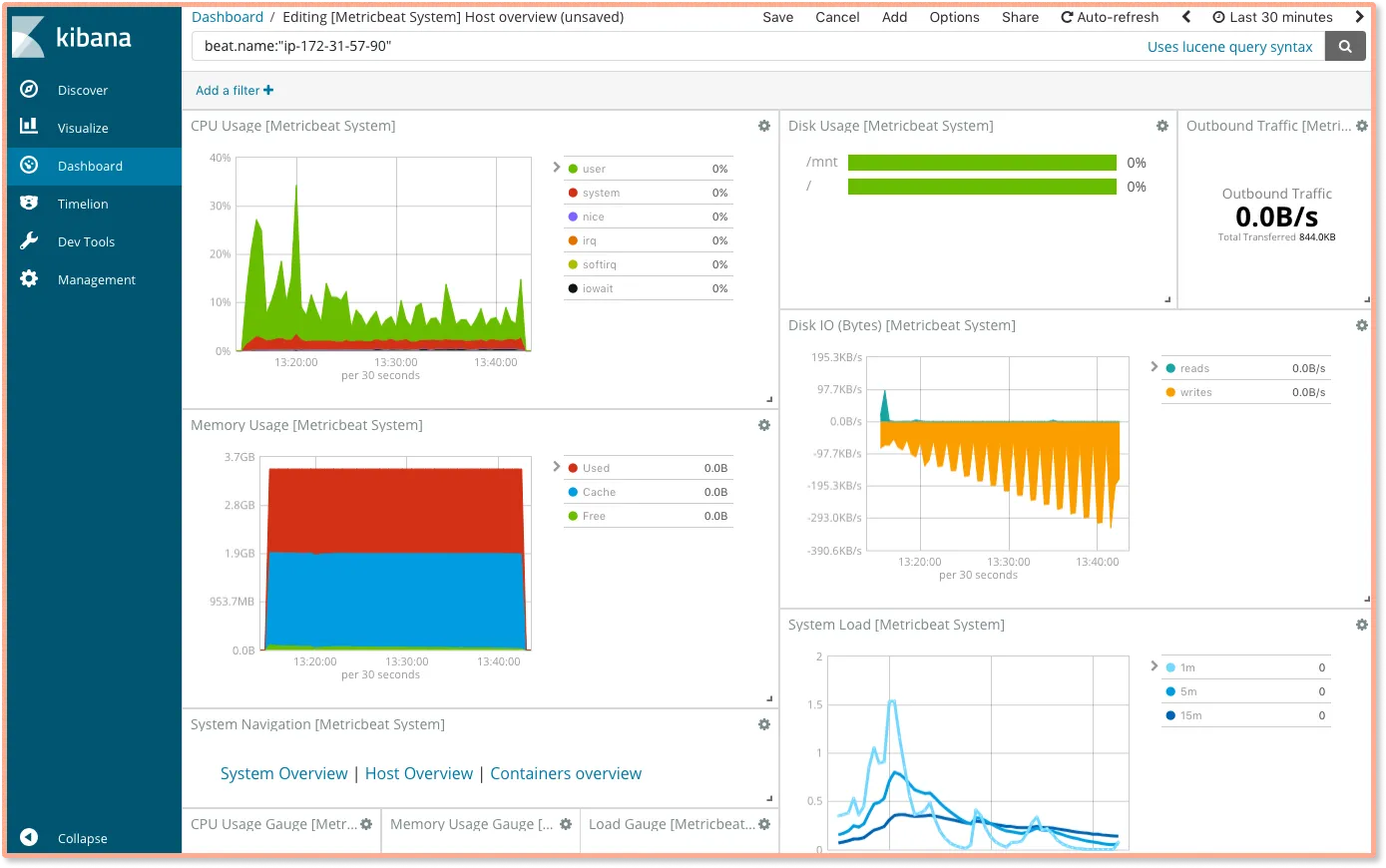
Datadog
Datadog is a robust alternative to Grafana, providing a comprehensive observability platform for monitoring, visualizing, and analyzing metrics, logs, and traces from applications. Its rich array of functionalities caters specifically to the intricate monitoring needs of larger enterprises. This in turn positions Datadog as the go-to choice for many large-scale organizations, surpassing Grafana in meeting their comprehensive monitoring requirements.
Additionally, Datadog is designed to scale with the demands of modern, dynamic environments. This scalability is essential for organizations dealing with large-scale infrastructures and distributed systems, where the ability to monitor a diverse range of services and technologies is crucial for maintaining operational efficiency.
Some key features of Datadog include:
- Pre-built and customizable dashboards
- Application Performance Monitoring
- Security Monitoring
- Infrastructure Monitoring
- Network Monitoring
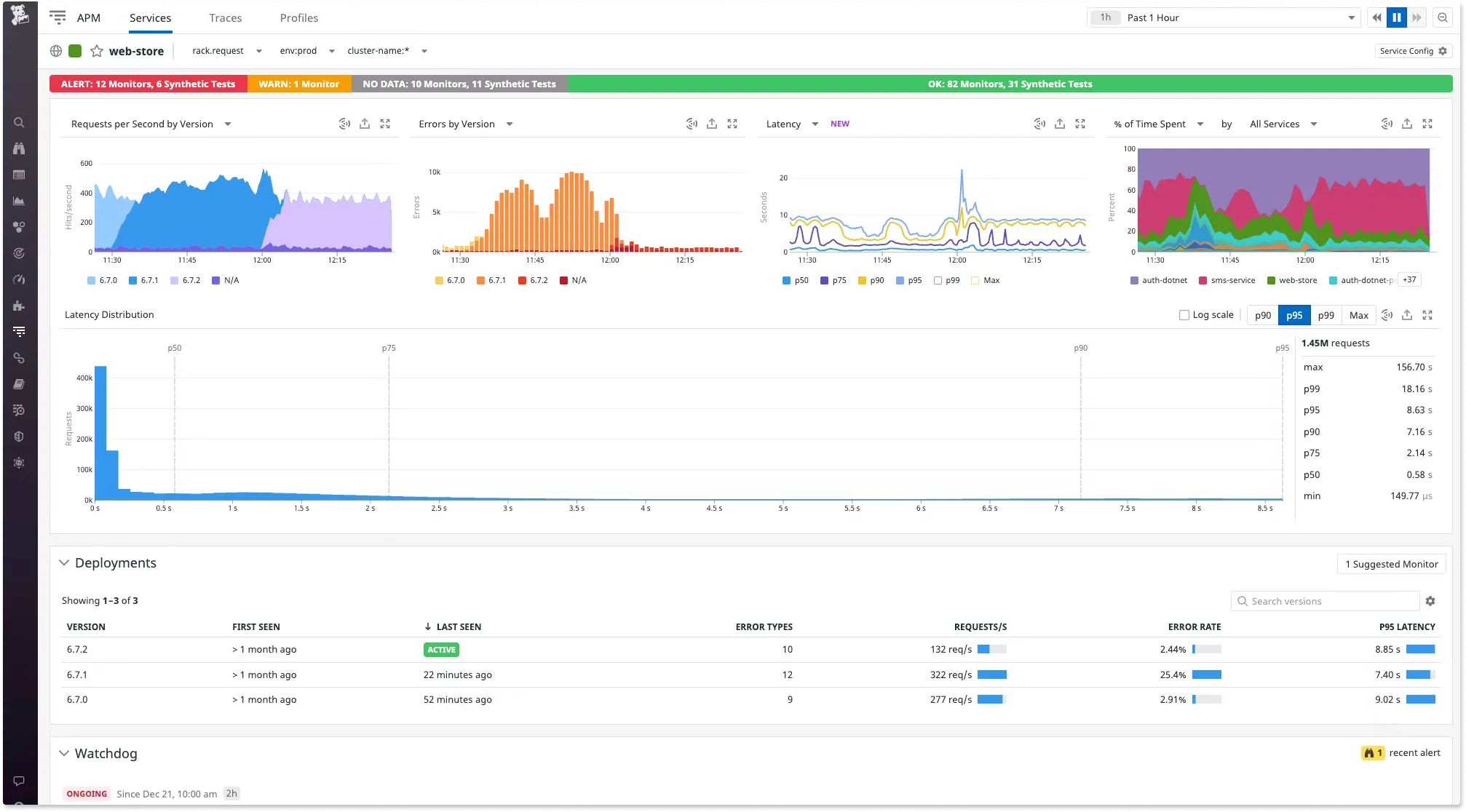
New Relic
New Relic is a comprehensive observability platform offering a compelling alternative to Grafana. Unlike conventional monitoring solutions, it takes a holistic approach, covering applications, infrastructure, and user experiences. By employing an agent-based monitoring system across servers, containers, and applications, New Relic delivers detailed performance insights. Its seamless integration with various third-party tools, coupled with scalability and enterprise-grade support, solidifies its standing as a formidable Grafana alternative.
Features of New Relic include:
- Log management
- APM
- Real user monitoring
- Synthetic monitoring
- Distributed tracing
- Customizable alerts
- Robust dashboard creation
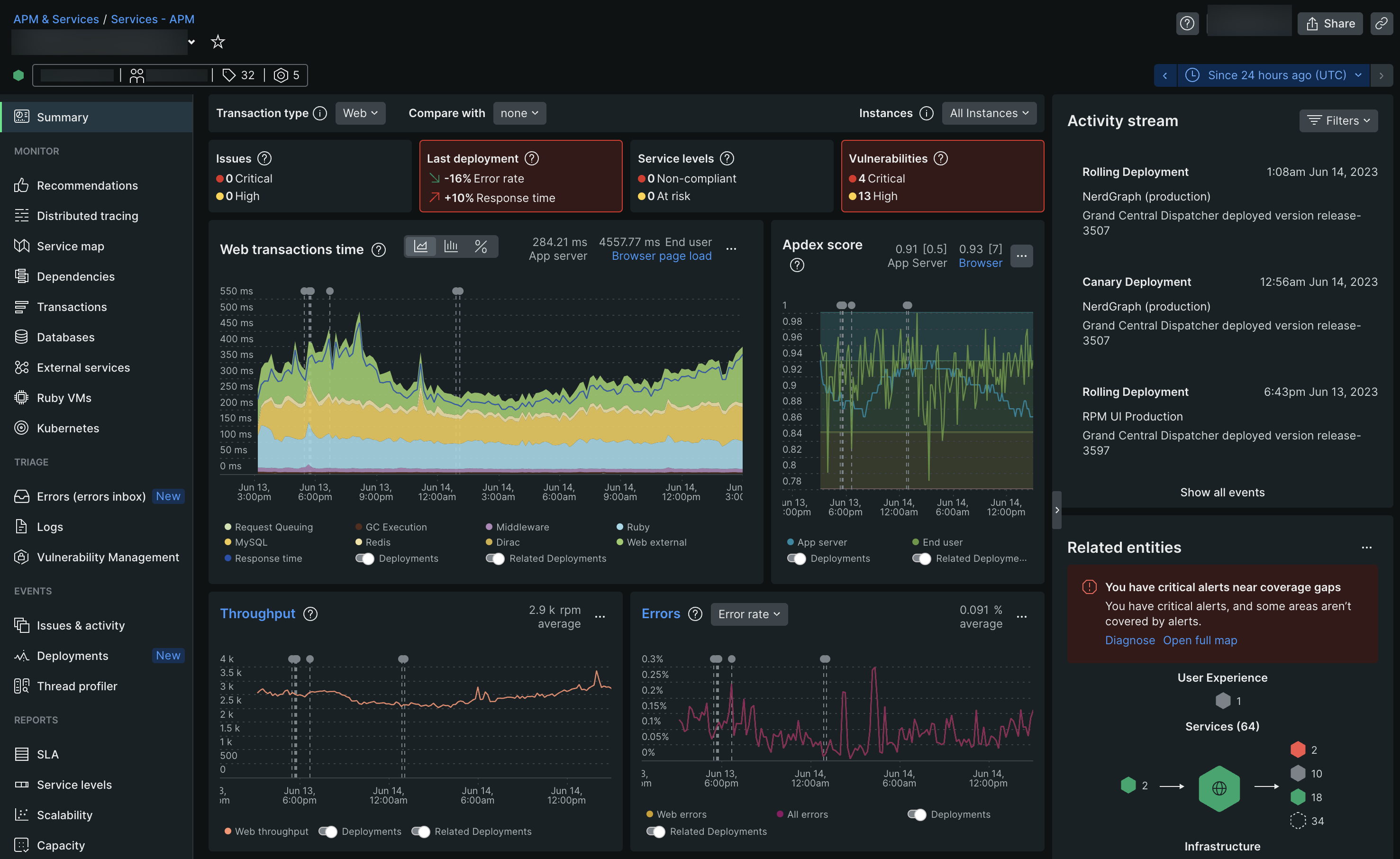
Splunk
Splunk is a powerful centralized log management platform that excels in collecting and storing extensive data from diverse sources, including messaging systems, databases, and network devices. It allows real-time data search and analysis through a web interface, complemented by pre-built visualizations for swift dashboard creation.
Splunk's strengths lie in its adeptness at handling large-scale data ingestion and robust analytics capabilities. This makes it invaluable for organizations with complex data monitoring needs, particularly in enterprise security and observability.
Splunk’s key features include:
- User-friendly interface
- Pre-built and customizable dashboards
- Real-time data search and analysis
- Collection and analysis of data from diverse sources
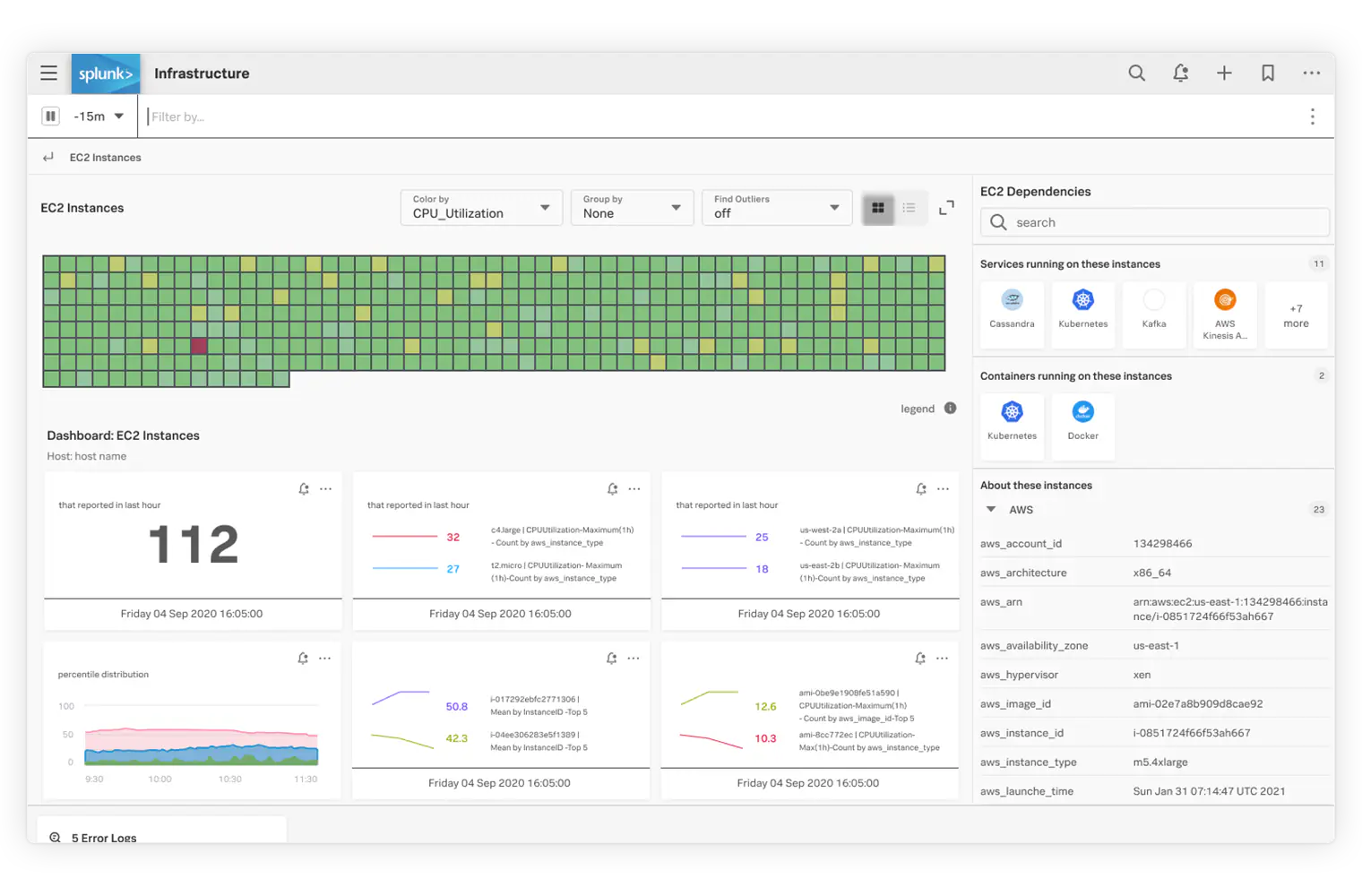
Prometheus
Prometheus is used as a metrics monitoring tool. It was initially developed at SoundCloud in 2012 before being released as an open-source project. It got accepted into the CloudNative Computing Foundation in 2016 and was the second project to graduate from the foundation, following Kubernetes.
Prometheus is a good tool for monitoring any kind of time-series data. By time-series data, we mean metrics that change over time. For example, requests per second on an endpoint.
It can be used as a Grafana alternative if you just want to do metrics monitoring. But its visualization layer is very basic, and it is often used with Grafana for monitoring where Grafana lets you choose Prometheus as a data source.
Some of the key features of Prometheus are:
- multi-dimensional data model
- a query language called PromQL to query the metrics data collected
- pull model data collection over HTTP
- an alert manager to handle alerts
Dynatrace
Dynatrace is a comprehensive observability and application performance management (APM) platform designed for monitoring that can be used as a Grafana alternative. It offers a wide range of features and capabilities to monitor, diagnose, and optimize application performance in complex, dynamic environments.
Some of the key features of Dynatrace are:
- Application Monitoring: Dynatrace automatically discovers and monitors applications and services, regardless of their environment
- User Experience Monitoring: It captures real user interactions with applications, providing insights into user behavior and experience.
- Infrastructure Monitoring: Dynatrace monitors the underlying infrastructure, including servers, virtual machines, containers, and cloud services.
- Integration: It offers integrations with other observability tools, DevOps pipelines, and collaboration platforms to streamline workflows.
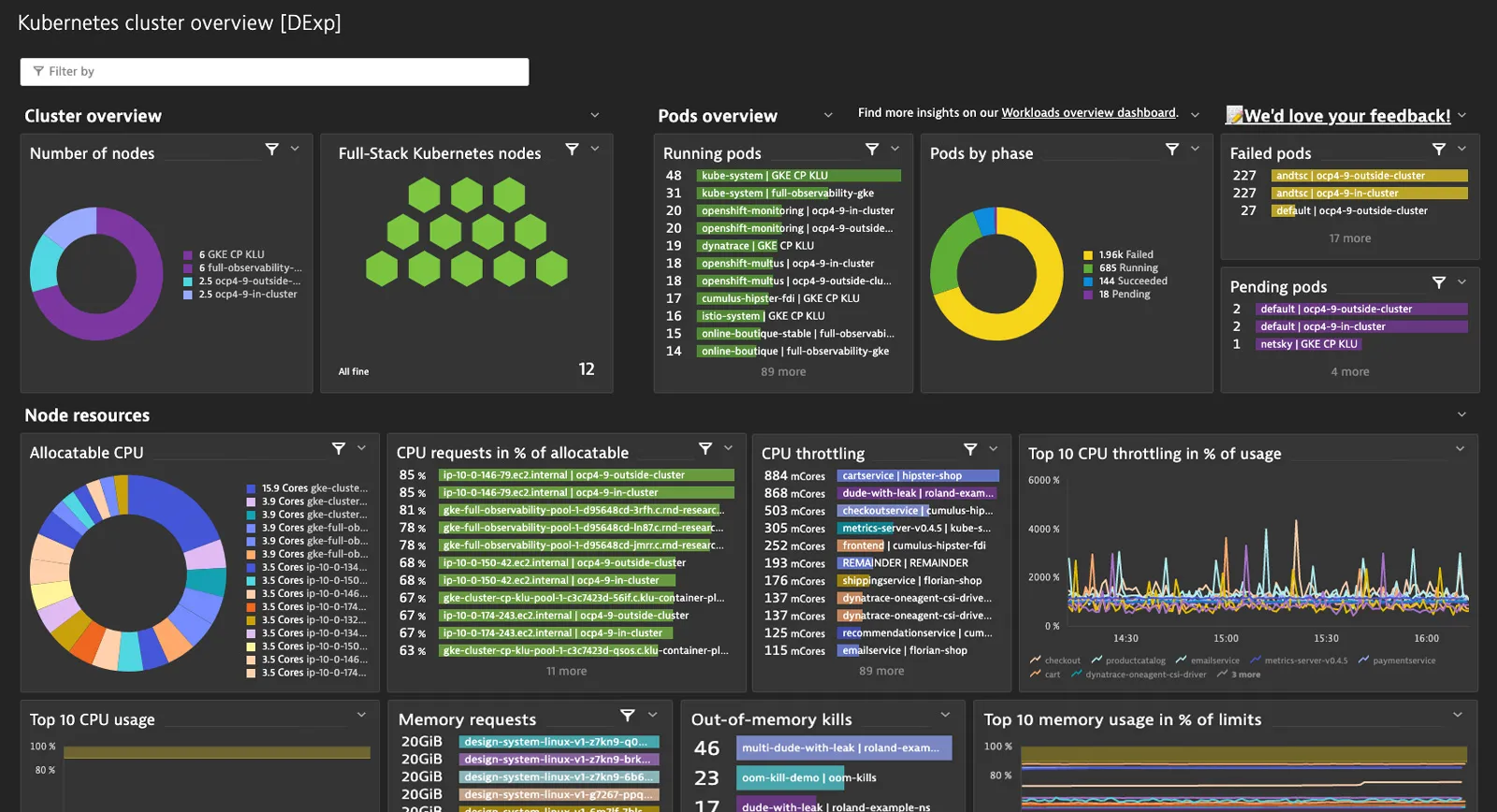
AppDynamics
AppDynamics is an enterprise Application Performance Management (APM) solution known for its comprehensive monitoring capabilities. It provides in-depth visibility into application performance and user experiences, offering code-level diagnostics, transaction tracing, and real-time insights.
AppDynamics is compatible with major technologies and can be deployed on-premise or as a Software-as-a-Service (SaaS) solution. It operates by installing an Agent in the application to collect performance metrics, which are then processed and presented via a web interface.
The platform stands out for its clean and modern UI, featuring heat maps for a clearer overview of metrics.
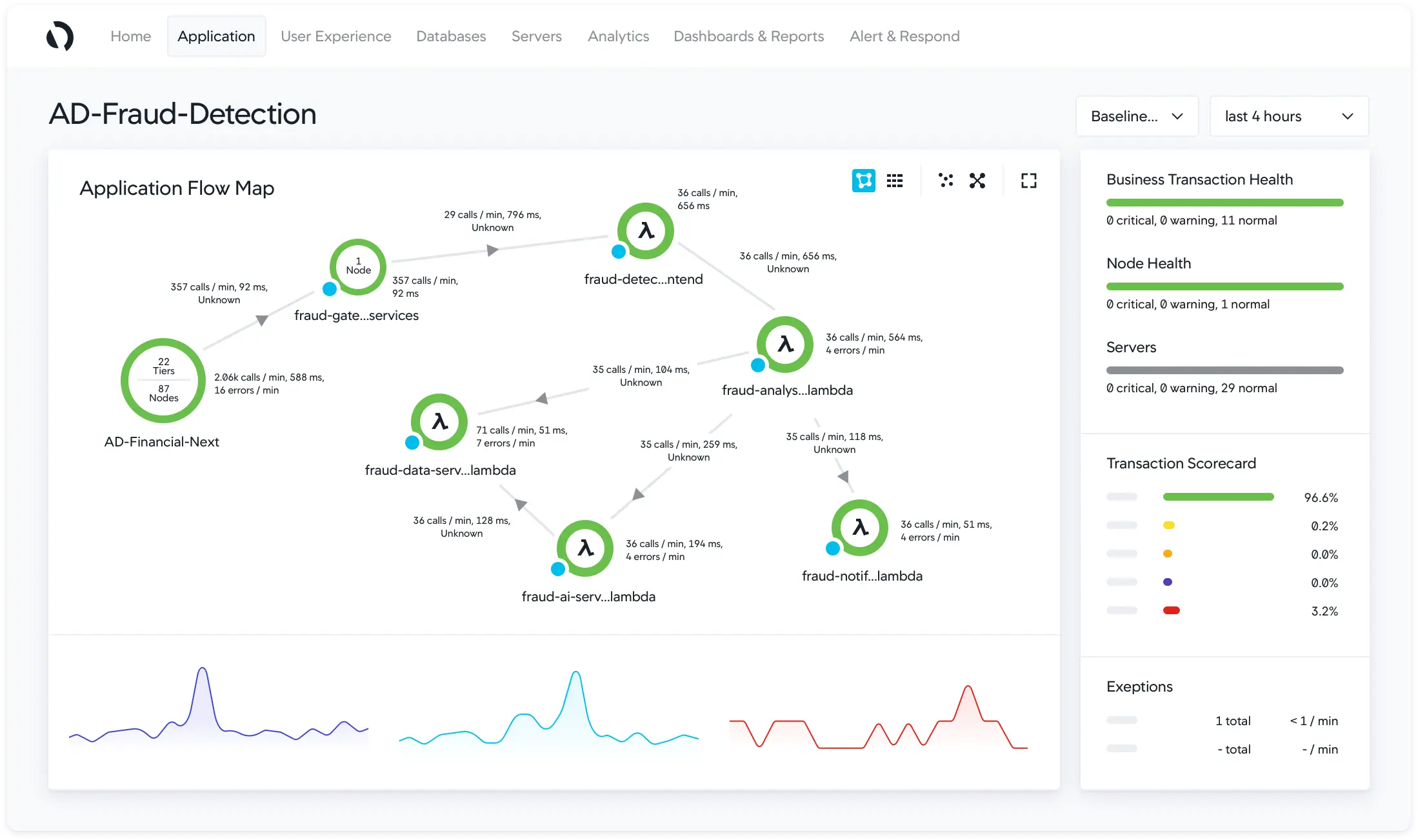
VictoriaMetrics
VictoriaMetrics is primarily a time-series database designed for efficiently storing and querying time-series data. It is often used as a back-end data store for time-series data generated by monitoring systems like Prometheus. VictoriaMetrics excels at handling large volumes of time-series data, offering efficient storage and query capabilities.
VictoriaMetrics can be an alternative to Grafana Mimir which is focused on long-term storage of Prometheus. The same company has also launched VictoriaLogs which can be a good alternative to Grafana Loki.
Metabase
Metabase is an open-source, powerful analytics tool that empowers users to glean insights and make informed decisions from their company's data. It's widely regarded as a suitable alternative to Grafana, focusing on simplicity and ease of use for a more straightforward analytics experience.
Metabase is tailored for exploring and querying structured data within databases. It empowers users with an intuitive interface to effortlessly create and share interactive dashboards, facilitating seamless data exploration. One of its notable advantages is the accessibility it offers to non-technical users, granting them the ability to create their own charts without relying on the data team.
Some key features of Metabase include:
- Ad-hoc querying
- Ease of use
- High-quality data visualizations
- User-friendly
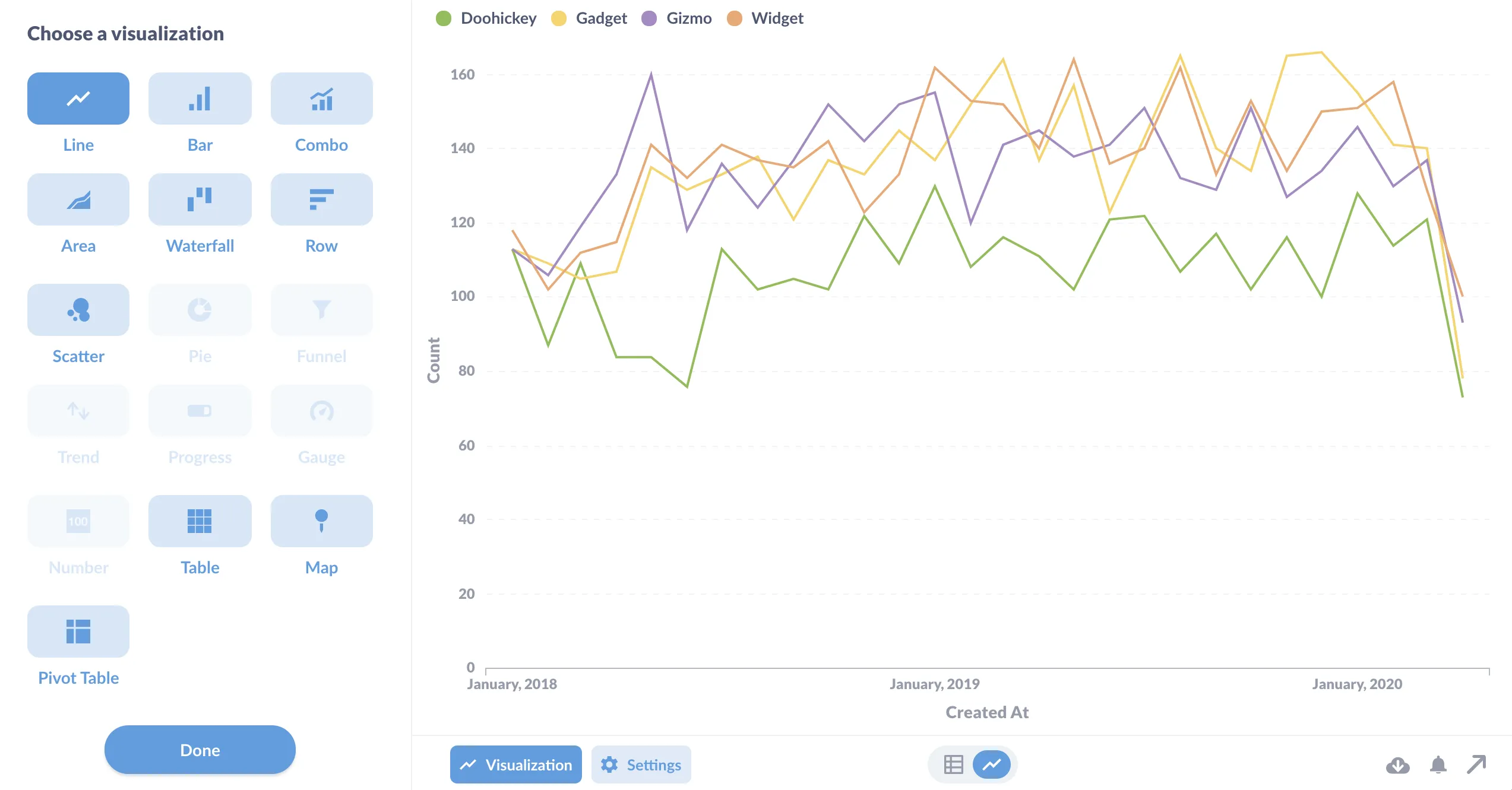
Zabbix
Zabbix is a comprehensive open-source monitoring solution designed for real-time monitoring and management of various network components, such as servers, networks, and applications. It excels in data collection and processing, enabling proactive monitoring for early issue detection and resolution.
Zabbix offers a unified view of the entire IT infrastructure through its user-friendly web-based interface. It delivers potent visualization capabilities through customizable dashboards, complemented by robust alerting mechanisms and comprehensive support for alert escalations.
Some of the key features of Zabbix include:
- Highly configurable alerting
- Flexible data collection
- Real-time graphing for metrics visualization
- Alerting features to notify administrators of any deviations from predefined thresholds
- User-friendly web-based interface
- Visualization capabilities through customizable dashboards
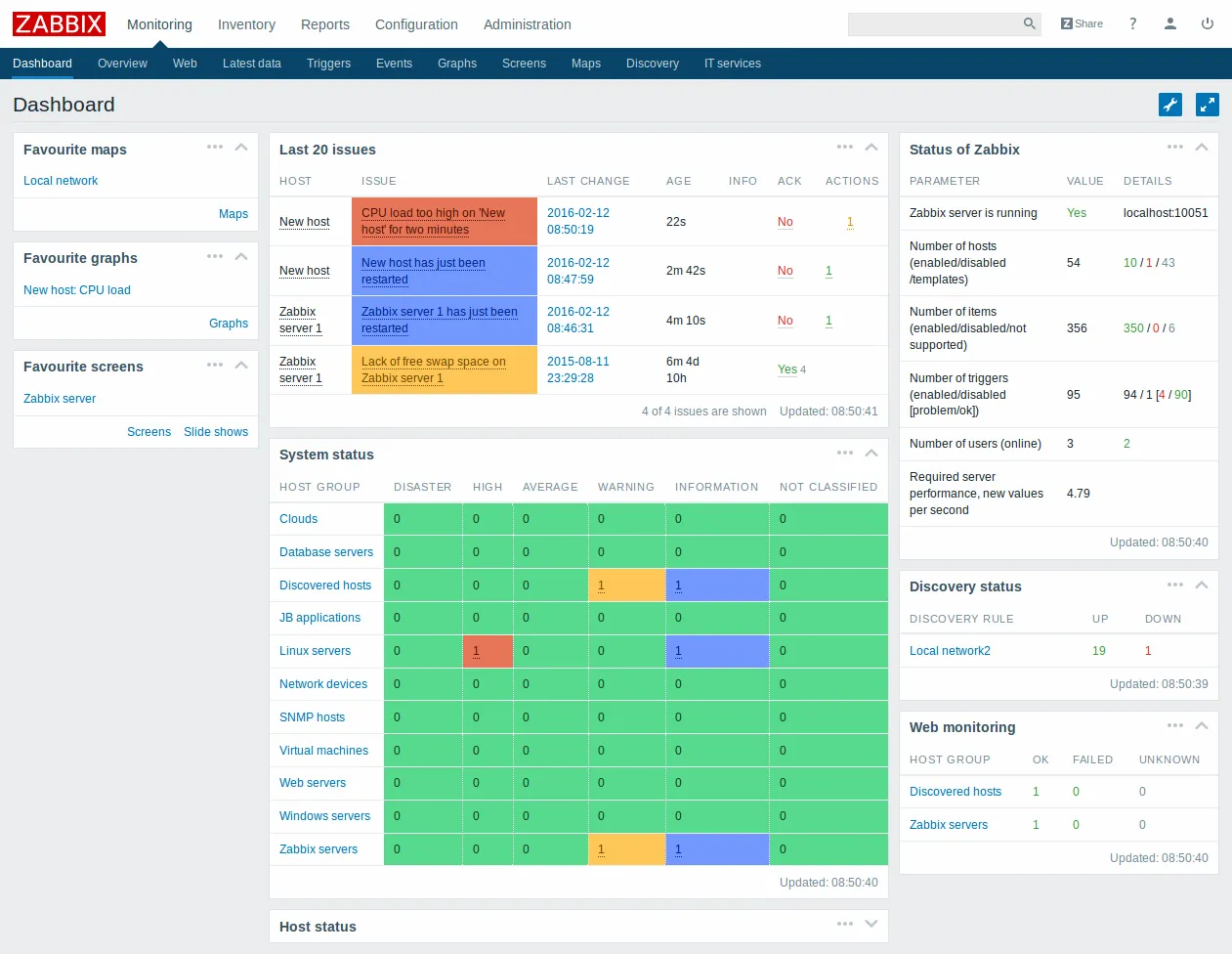
How to choose between so many Grafana Alternatives?
When choosing among various Grafana alternatives for observability, it's essential to consider several key factors to find the tool that best meets your specific needs:
Open Source vs. Proprietary: Determine whether an open-source solution like SigNoz or a proprietary one like Datadog better aligns with your requirements and budget. Open-source tools often offer more customization and community support, while proprietary tools may provide more comprehensive out-of-the-box features and dedicated customer service. At SigNoz, we offer both cloud and self-hosted version. A tool that has both cloud and self-hosted version can be suitable for teams that wants a self-hosted version for staging and cloud version for production environments.
Integration Capabilities: Evaluate how well each tool integrates with your existing tech stack. Kibana, for example, is well-suited for Elasticsearch environments, while Prometheus excels in monitoring Kubernetes clusters.
Data Handling and Performance: Consider the volume and complexity of the data you need to observe. Tools like Splunk and New Relic are designed for handling large volumes of data and complex environments.
User Interface and Ease of Use: Assess the user interface and overall user experience. Some tools may offer more intuitive dashboards and easier configuration than others.
Customization and Extensibility: Look at how customizable each tool is. Solutions like Grafana and its alternatives vary in their ability to tailor dashboards, alerts, and reports.
Pricing Structure: Understand the pricing models of each tool. Some, like Datadog and New Relic, are based on data volume or monitoring scope, while others like SigNoz may offer more straightforward pricing schemes.
Specific Features: Identify any specific features you need, such as real-time analytics, AI-driven insights, or automated incident response, which are offered by tools like Dynatrace and AppDynamics.
Scalability and Reliability: Ensure that the tool can scale with your needs and provide reliable performance under varying loads. This is particularly important for high-availability environments.
Security and Compliance: If you operate in a regulated industry, check for compliance certifications and security features in tools like Zabbix and VictoriaMetrics.
Community and Support: Finally, consider the community and support ecosystem. A strong community and good customer support can be invaluable, especially for complex deployments.
By carefully considering these aspects, you can select a Grafana alternative that not only meets your current observability needs but also aligns with your organization's long-term goals and constraints.
SigNoz can be one of the most well-balanced alternatives to Grafana. It is open-source like Grafana and also provides a SaaS-like experience in both its self-hosted and cloud versions. It uses ClickHouse as a single datastore for all three types of signals, which empowers it to provide better correlation between signals. It is also much easier to self-host when compared to Grafana, which requires you to handle multiple tools.
Getting started with SigNoz
SigNoz cloud is the easiest way to run SigNoz. Sign up for a free account and get 30 days of unlimited access to all features.
You can also install and self-host SigNoz yourself since it is open-source. With 20,000+ GitHub stars, open-source SigNoz is loved by developers. Find the instructions to self-host SigNoz.
Related Posts
Kibana vs Grafana - Which tool to choose? | SigNoz
